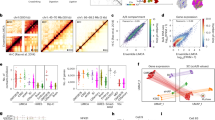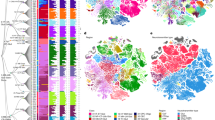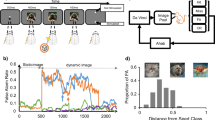Abstract
The mammalian olfactory system uses a large family of odorant receptors (ORs) to detect and discriminate amongst a myriad of volatile odor molecules. Understanding odor coding requires comprehensive mapping between ORs and corresponding odors. We developed a means of high-throughput in vivo identification of OR repertoires responding to odorants using phosphorylated ribosome immunoprecipitation of mRNA from olfactory epithelium of odor-stimulated mice followed by RNA-Seq. This approach screened the endogenously expressed ORs against an odor in one set of experiments using awake and freely behaving mice. In combination with validations in a heterologous system, we identified sets of ORs for two odorants, acetophenone and 2,5-dihydro-2,4,5-trimethylthiazoline (TMT), encompassing 69 OR-odorant pairs. We also identified shared amino acid residues specific to the acetophenone or TMT receptors and developed models to predict receptor activation by acetophenone. Our results provide a method for understanding the combinatorial coding of odors in vivo.
This is a preview of subscription content, access via your institution
Access options
Subscribe to this journal
Receive 12 print issues and online access
$209.00 per year
only $17.42 per issue
Buy this article
- Purchase on Springer Link
- Instant access to full article PDF
Prices may be subject to local taxes which are calculated during checkout







Similar content being viewed by others
Accession codes
References
Buck, L. & Axel, R. A novel multigene family may encode odorant receptors: a molecular basis for odor recognition. Cell 65, 175–187 (1991).
Niimura, Y., Matsui, A. & Touhara, K. Extreme expansion of the olfactory receptor gene repertoire in African elephants and evolutionary dynamics of orthologous gene groups in 13 placental mammals. Genome Res. 24, 1485–1496 (2014).
Malnic, B., Hirono, J., Sato, T. & Buck, L.B. Combinatorial receptor codes for odors. Cell 96, 713–723 (1999).
Saito, H., Chi, Q., Zhuang, H., Matsunami, H. & Mainland, J.D. Odor coding by a mammalian receptor repertoire. Sci. Signal. 2, ra9 (2009).
Peterlin, Z., Firestein, S. & Rogers, M.E. The state of the art of odorant receptor deorphanization: a report from the orphanage. J. Gen. Physiol. 143, 527–542 (2014).
Zhao, H. et al. Functional expression of a mammalian odorant receptor. Science 279, 237–242 (1998).
Touhara, K. et al. Functional identification and reconstitution of an odorant receptor in single olfactory neurons. Proc. Natl. Acad. Sci. USA 96, 4040–4045 (1999).
Bozza, T., Feinstein, P., Zheng, C. & Mombaerts, P. Odorant receptor expression defines functional units in the mouse olfactory system. J. Neurosci. 22, 3033–3043 (2002).
Saito, H., Kubota, M., Roberts, R.W., Chi, Q. & Matsunami, H. RTP family members induce functional expression of mammalian odorant receptors. Cell 119, 679–691 (2004).
Araneda, R.C., Kini, A.D. & Firestein, S. The molecular receptive range of an odorant receptor. Nat. Neurosci. 3, 1248–1255 (2000).
Grosmaitre, X. et al. SR1, a mouse odorant receptor with an unusually broad response profile. J. Neurosci. 29, 14545–14552 (2009).
Mainland, J.D. et al. The missense of smell: functional variability in the human odorant receptor repertoire. Nat. Neurosci. 17, 114–120 (2014).
Keller, A., Zhuang, H., Chi, Q., Vosshall, L.B. & Matsunami, H. Genetic variation in a human odorant receptor alters odour perception. Nature 449, 468–472 (2007).
Menashe, I. et al. Genetic elucidation of human hyperosmia to isovaleric acid. PLoS Biol. 5, e284 (2007).
Shirasu, M. et al. Olfactory receptor and neural pathway responsible for highly selective sensing of musk odors. Neuron 81, 165–178 (2014).
Dong, P.Y., Gong, N.N. & Matsunami, H. Cell-based system for identification of olfactory receptors. in Bioelectronic Nose (ed. T.H. Park) 83–95 (Springer Netherlands, 2014).
Knight, Z.A. et al. Molecular profiling of activated neurons by phosphorylated ribosome capture. Cell 151, 1126–1137 (2012).
Haga, S. et al. The male mouse pheromone ESP1 enhances female sexual receptive behaviour through a specific vomeronasal receptor. Nature 466, 118–122 (2010).
Isogai, Y. et al. Molecular organization of vomeronasal chemoreception. Nature 478, 241–245 (2011).
Chess, A., Simon, I., Cedar, H. & Axel, R. Allelic inactivation regulates olfactory receptor gene expression. Cell 78, 823–834 (1994).
Zhang, J., Huang, G., Dewan, A., Feinstein, P. & Bozza, T. Uncoupling stimulus specificity and glomerular position in the mouse olfactory system. Mol. Cell. Neurosci. 51, 79–88 (2012).
Oka, Y. et al. Odorant receptor map in the mouse olfactory bulb: in vivo sensitivity and specificity of receptor-defined glomeruli. Neuron 52, 857–869 (2006).
Krautwurst, D., Yau, K.W. & Reed, R.R. Identification of ligands for olfactory receptors by functional expression of a receptor library. Cell 95, 917–926 (1998).
McClintock, T.S. et al. In vivo identification of eugenol-responsive and muscone-responsive mouse odorant receptors. J. Neurosci. 34, 15669–15678 (2014).
Meister, M. & Bonhoeffer, T. Tuning and topography in an odor map on the rat olfactory bulb. J. Neurosci. 21, 1351–1360 (2001).
Zhuang, H. & Matsunami, H. Evaluating cell-surface expression and measuring activation of mammalian odorant receptors in heterologous cells. Nat. Protoc. 3, 1402–1413 (2008).
Li, Y.R. & Matsunami, H. Activation state of the M3 muscarinic acetylcholine receptor modulates mammalian odorant receptor signaling. Sci. Signal. 4, ra1 (2011).
Zhang, X. & Firestein, S. The olfactory receptor gene superfamily of the mouse. Nat. Neurosci. 5, 124–133 (2002).
Grantham, R. Amino acid difference formula to help explain protein evolution. Science 185, 862–864 (1974).
Bishop, C.M. Pattern Recognition and Machine Learning (Information Science and Statistics) (Springer-Verlag New York, 2006).
Zou, H. & Hastie, T. Regularization and variable selection via the elastic net. J. R. Stat. Soc. Series B Stat. Methodol. 67, 301–320 (2005).
Takahashi, L.K., Nakashima, B.R., Hong, H. & Watanabe, K. The smell of danger: a behavioral and neural analysis of predator odor-induced fear. Neurosci. Biobehav. Rev. 29, 1157–1167 (2005).
Kobayakawa, K. et al. Innate versus learned odor processing in the mouse olfactory bulb. Nature 450, 503–508 (2007).
Weid, B. et al. In vivo identification of receptor-ligand pairs via large-scale transcriptional profiling of chemosensory neurons. Nat. Neurosci. doi:10.1038/nn.4100 (31 August 2015).
Thiebaud, N. et al. Odorant metabolism catalyzed by olfactory mucosal enzymes influences peripheral olfactory responses in rats. PLoS ONE 8, e59547 (2013).
Nagashima, A. & Touhara, K. Enzymatic conversion of odorants in nasal mucus affects olfactory glomerular activation patterns and odor perception. J. Neurosci. 30, 16391–16398 (2010).
Scott, J.W., Sherrill, L., Jiang, J. & Zhao, K. Tuning to odor solubility and sorption pattern in olfactory epithelial responses. J. Neurosci. 34, 2025–2036 (2014).
Grossisseroff, R. & Lancet, D. Concentration-dependent changes of perceived odor quality. Chem. Senses 13, 191–204 (1988).
Li, J., Haddad, R., Chen, S., Santos, V. & Luetje, C.W. A broadly tuned mouse odorant receptor that detects nitrotoluenes. J. Neurochem. 121, 881–890 (2012).
Nara, K., Saraiva, L.R., Ye, X. & Buck, L.B. A large-scale analysis of odor coding in the olfactory epithelium. J. Neurosci. 31, 9179–9191 (2011).
Boyle, S.M., McInally, S. & Ray, A. Expanding the olfactory code by in silico decoding of odor-receptor chemical space. eLife 2, e01120 (2013).
Langmead, B., Trapnell, C., Pop, M. & Salzberg, S.L. Ultrafast and memory-efficient alignment of short DNA sequences to the human genome. Genome Biol. 10, R25 (2009).
Quinlan, A.R. & Hall, I.M. BEDTools: a flexible suite of utilities for comparing genomic features. Bioinformatics 26, 841–842 (2010).
Mortazavi, A., Williams, B.A., McCue, K., Schaeffer, L. & Wold, B. Mapping and quantifying mammalian transcriptomes by RNA-Seq. Nat. Methods 5, 621–628 (2008).
Robinson, M.D., McCarthy, D.J. & Smyth, G.K. edgeR: a Bioconductor package for differential expression analysis of digital gene expression data. Bioinformatics 26, 139–140 (2010).
Anders, S. & Huber, W. Differential expression analysis for sequence count data. Genome Biol. 11, R106 (2010).
McCarthy, D.J., Chen, Y. & Smyth, G.K. Differential expression analysis of multifactor RNA-Seq experiments with respect to biological variation. Nucleic Acids Res. 40, 4288–4297 (2012).
Benjamini, Y. & Hochberg, Y. Controlling the false discovery rate: a practical and powerful approach to multiple testing. J. R. Stat. Soc. Series B Stat. Methodol. 57, 289–300 (1995).
Crooks, G.E., Hon, G., Chandonia, J.M. & Brenner, S.E. WebLogo: a sequence logo generator. Genome Res. 14, 1188–1190 (2004).
Friedman, J., Hastie, T. & Tibshirani, R. Regularization paths for generalized linear models via coordinate descent. J. Stat. Softw. 33, 1–22 (2010).
Acknowledgements
We thank G. Barnea and R. Axel for antibodies to M72, H. Zhuang for some of the OR constructs, D. Marchuk for sharing of equipment, the Duke IGSP Genome Sequencing and Analysis Core Resource for providing Illumina sequencing service, and S. Mukherjee and J. Mainland for helpful discussions and comments on the manuscript. This work was supported by grants from the US National Institutes of Health (DC012095 and DC014423).
Author information
Authors and Affiliations
Contributions
H.M. supervised all of the experiments and data analysis. N.N.G., Y.J., X.S.H. and H.M. performed immunohistochemistry experiments. Y.J. and H.M. performed pS6-IP. Y.J. performed bioinformatics and statistical analysis. M.J.N. cloned some of the OR constructs. Y.J. and R.P. performed in vitro luciferase assays. Y.J., N.N.G. and H.M. wrote the paper.
Corresponding author
Ethics declarations
Competing interests
The authors declare no competing financial interests.
Integrated supplementary information
Supplementary Figure 1 pS6 induction in the OE following exposure to M72 agonists and control odors.
(a) In vitro responses of Olfr160 (M72) to various odors used in Fig. 1 b and Fig. S1b. Responses are scaled to acetophenone. The maximum response to acetophenone is defined as 100.
(b) pS6 immunostaining in the OE following exposure to M72 agonists and control odors. Green: Antibody staining for pS6. Magenta: Antibody staining for a known acetophenone receptor, M72. Blue: Bisbenzimide staining showing the nuclei. Arrowheads indicate colocalization of M72 and pS6 signals.Scale bar, 50 μm.
Supplementary Figure 2 Characterization of pS6 induction in the OE for known OR–odorant pairs.
(a) pS6 induction in the OE for 5 known OR–odorant pairs. Green: Antibody staining for pS6. Magenta: RNA FISH for ORs. Blue: Bisbenzimide staining showing the nuclei. Arrowheads indicate colocalization of OR and pS6 signals when stimulated with the cognate ligands. Scale bar, 25 μm.
(b) Time course of pS6 induction following odor exposure. Green: Antibody staining for pS6. Blue: Bisbenzimide staining showing the nuclei. Scale bar, 50 μm.
Supplementary Figure 3 pS6 induction in the OE for newly identified acetophenone ORs.
(a) Representative figures showing pS6 induction in the OE for newly identified acetophenone ORs and a control OR (Olfr1132) following 1% and 100% acetophenone stimulation for 1 hour. Green: Antibody staining for pS6. Magenta: RNA FISH for ORs. Blue: Bisbenzimide staining showing the nuclei. Scale bar, 25 μm.
(b) Quantification of pS6 staining intensity following 1% and 100% acetophenone stimulation.
Supplementary Figure 4 Sequence comparison of 48 identified acetophenone ORs and all mouse ORs.
Heights of letters indicate residue abundance for a given location in the alignment. The positions that are more conserved with the acetophenone ORs than random are marked with stars. Predicted transmembrane domains are labeled in orange.
Supplementary Figure 5 Dose response curves of human ORs to acetophenone.
Dose response curves of 27 human ORs used for external validation of the model.
Supplementary Figure 6 pS6–IP identifies ORs activated by TMT.
(a) Scatter plot comparing immunoprecipitated mRNA counts from stimulated sample (100% TMT) versus unstimulated sample. X–axis: mean read counts of genes in unstimulated IP samples (n=4). Y–axis: mean read counts of genes in TMT stimulated IP samples (n=4). Red dots represent ORs. Gray dots represent non–OR genes. Broken line: unit–slope.
(b) Differential enrichment calling of OR mRNA. 43 ORs are enriched in the 100% TMT stimulated group with p–value smaller than 0.05, after adjusting for multiple comparisons across the detected OR repertoire. Broken line: unit–slope.
(c) Differential enrichment calling of OR mRNA. 4 ORs are enriched in the 1% acetophenone stimulated group with p–value smaller than 0.05, after adjusting for multiple comparisons across the detected OR repertoire. Broken line: unit–slope.
(d) Scatter plot comparing p–values of enrichment in 100% TMT versus 1% TMT stimulated samples. Red dashed line: p=0.001. Blue dashed line: p=0.05. Note the absence of ORs in the bottom right corner.
(e) Localization of ORs that were identified to be activated by TMT via RNA in situ hybridization. 20 μm tissue sections of the OE were marked with digoxigenin (DIG)-labeled RNA probe complementary to specific OR mRNA transcripts. Scale bar = 100 μm and applies to all panels.
Supplementary Figure 7 Comparison with acetophenone ORs identified by DREAM.
ROC curves illustrating performance of classifiers using in vivo enrichment p–values to predict whether the OR is called as acetophenone OR by DREAM. Area Under Curve: 0.860, p=4×10−9, Wilcoxon rank–sum test (one tailed against H0: Classifier performance no better than random).
Supplementary information
Supplementary Text and Figures
Supplementary Figures 1–7 (PDF 1513 kb)
Statistics for comparing pS6 signal intensity.
Comparison of pS6 signal intensities at different odorant concentrations. One-way ANOVA followed by Dunnett's multiple comparisons test. (XLS 44 kb)
Data sets for in vivo and in vitro OR activation measures.
Differential expression analysis results for 100% acetophenone, 1% acetophenone, EC50 values and fold of induction for in vitro luciferase assay, summary of identified acetophenone ORs, differential expression analysis results for 100% TMT, 1% TMT, and list of identified TMT ORs. (XLS 997 kb)
Comparison with the DREAM method.
In vivo and in vitro data summary for the 22 ORs for acetophenone identified by the DREAM method. (XLSX 58 kb)
Rights and permissions
About this article
Cite this article
Jiang, Y., Gong, N., Hu, X. et al. Molecular profiling of activated olfactory neurons identifies odorant receptors for odors in vivo. Nat Neurosci 18, 1446–1454 (2015). https://doi.org/10.1038/nn.4104
Received:
Accepted:
Published:
Issue Date:
DOI: https://doi.org/10.1038/nn.4104
This article is cited by
-
CD20/MS4A1 is a mammalian olfactory receptor expressed in a subset of olfactory sensory neurons that mediates innate avoidance of predators
Nature Communications (2024)
-
Application of artificial intelligence to decode the relationships between smell, olfactory receptors and small molecules
Scientific Reports (2022)
-
Binding site identification of G protein-coupled receptors through a 3D Zernike polynomials-based method: application to C. elegans olfactory receptors
Journal of Computer-Aided Molecular Design (2022)
-
Odor coding in the mammalian olfactory epithelium
Cell and Tissue Research (2021)
-
Peripheral oxytocin injection modulates vomeronasal sensory activity and reduces pup-directed aggression in male mice
Scientific Reports (2020)



